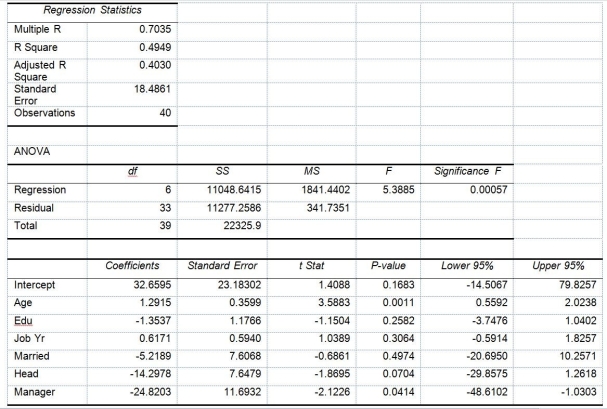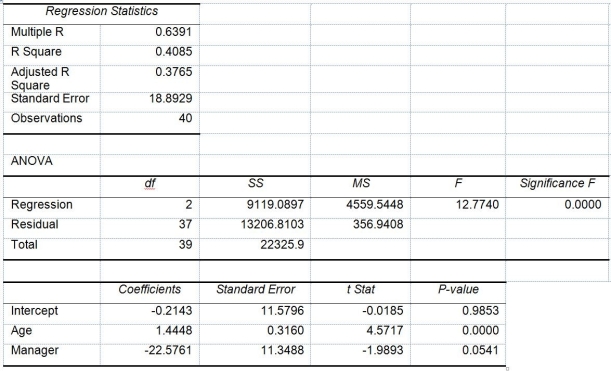TABLE 14-17


Model 2 is the regression analysis where the dependent variable is Unemploy and the independent variables are
Age and Manager. The results of the regression analysis are given below:

-Referring to Table 14-17 Model 1, ________ of the variation in the number of weeks a worker is unemployed due to a layoff can be explained by the number of years of education received while controlling for the other independent variables.
Definitions:
Pure Monopolist
An entity that is the sole provider of a particular product or service in the market, facing no direct competition.
Pure Monopoly
A market structure where a single seller controls the entire supply of a product or service, and no close substitutes exist.
Long-run Equilibrium
A state in which all resources are optimally allocated, and all firms in the industry are making normal profits, with no external pressures for change.
X-inefficiency
The inefficiency that occurs in a firm due to a lack of competitive pressure, leading to higher costs than necessary.
Q7: Determining the root causes of why defects
Q32: Referring to Table 17-9, an R chart
Q40: Referring to Table 13-3, suppose the director
Q56: The total sum of squares (SST) in
Q90: Referring to Table 17-6, a p control
Q94: Referring to Table 13-13, the conclusion on
Q110: Referring to Table 13-10, what is the
Q119: Referring to Table 14-18, there is not
Q166: Referring to Table 14-19, what are the
Q215: Referring to Table 14-15, which of the